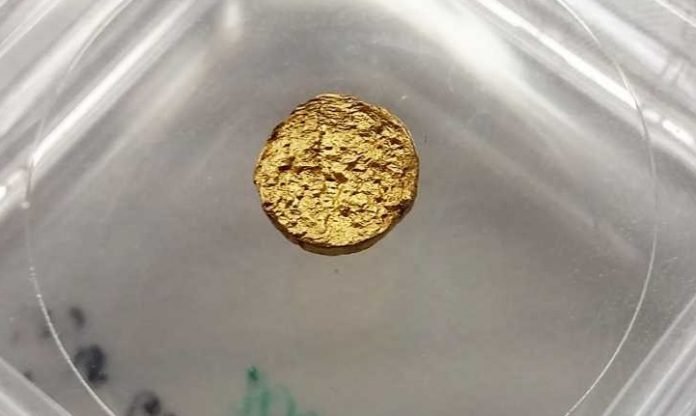
Researchers have created an incredibly lightweight 18-carat gold, using a matrix of plastic in place of metallic alloy elements.
The discovery will thrill lovers of gold watches and heavy jewelry.
The objects of their desire may someday become much lighter, but without losing any of their glitter.
Especially in watches, a small amount of weight can make all the difference.
No one wants to wear a heavy watch on their wrist, even if it’s made of real gold. After a time, it becomes uncomfortable and annoying.
Researchers set out to create a new form of gold that weighs about five to 10 times less than traditional 18-carat gold. The conventional mixture is usually three-quarters gold and one-quarter copper, with a density of about 15 g/cm3.
That’s not true for the new lightweight gold: its density is just 1.7 g/cm3. And nonetheless it is still 18-carat gold. How did researchers achieve this miraculous lightness?
Instead of a metal alloy element, Leonie van ‘t Hag, formerly a postdoc in the lab of Raffaele Mezzenga, professor of food and soft materials at ETH Zurich, and colleagues used protein fibers and a polymer latex to form a matrix in which they embedded thin discs of gold nanocrystals.
In addition, the lightweight gold contains countless tiny air pockets invisible to the eye.
The researchers’ study on this process appears in the journal Advanced Functional Materials.
How to turn plastic into gold
Here’s how the researchers created the new lightweight gold: first, they added the ingredients to water and created a dispersion.
After adding salt to turn the dispersion into a gel, they replaced the water in it with alcohol.
Then they placed the alcohol gel into a pressure chamber, where high pressures and a supercritical CO2 atmosphere enabled miscibility of the alcohol and the CO2 gas; when the pressure is released, everything turns it into a homogeneous gossamer-like aerogel.
Heat applied afterwards anneals the plastic polymers, transforming the material and compacting it into the final desired shape, yet preserving the 18-carat composition.
“This gold has the material properties of a plastic,” Mezzenga says. If a piece of it falls onto a hard surface, it sounds like plastic. But it glimmers like metallic gold, and can be polished and worked into the desired form.
Jewelry and electronics
The researchers can even change the composition of the gold to adjust the hardness of the material.
They can also replace the latex in the matrix with other plastics, such as polypropylene. Since polypropylene liquifies at some specific temperature, “plastic gold” made with it can mimic the gold melting process, but at much lower temperatures.
Furthermore, the shape of the gold nanoparticle can change the material’s color: “nanoplatelets” produce gold’s typical shimmer, while spherical nanoparticles of gold lend the material a violet hue.
“As a general rule, our approach lets us create almost any kind of gold we choose, in line with the desired properties,” Mezzenga says.
While the plastic gold will be in particular demand in the manufacture of watches and jewelry, it is also suitable for chemical catalysis, electronics applications, or radiation shielding, Mezzenga says. The researchers have applied for patents for both the process and the material.
The team previously made the lightest gold in world—gold that weighed so little it could float atop cappuccino froth.
“But the material was too unstable and couldn’t be worked,” Mezzenga says. “This time we set ourselves the clear goal of creating a lightweight gold that can also actually be processed and used in most of the applications where gold is used today.”
Written by Peter Rüegg.



